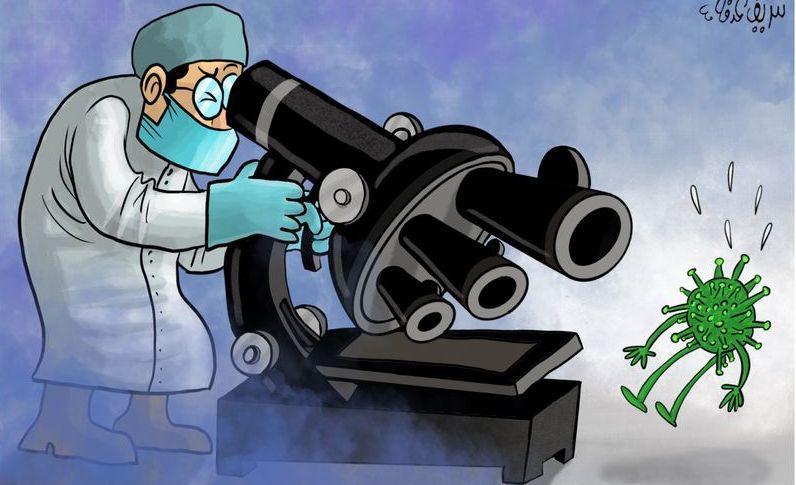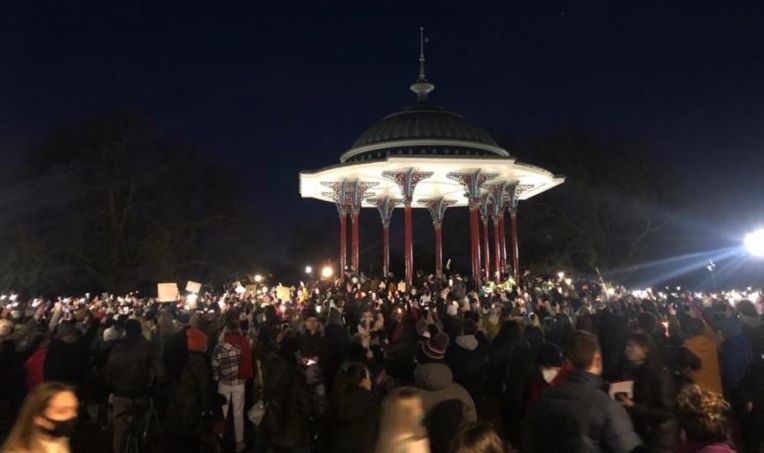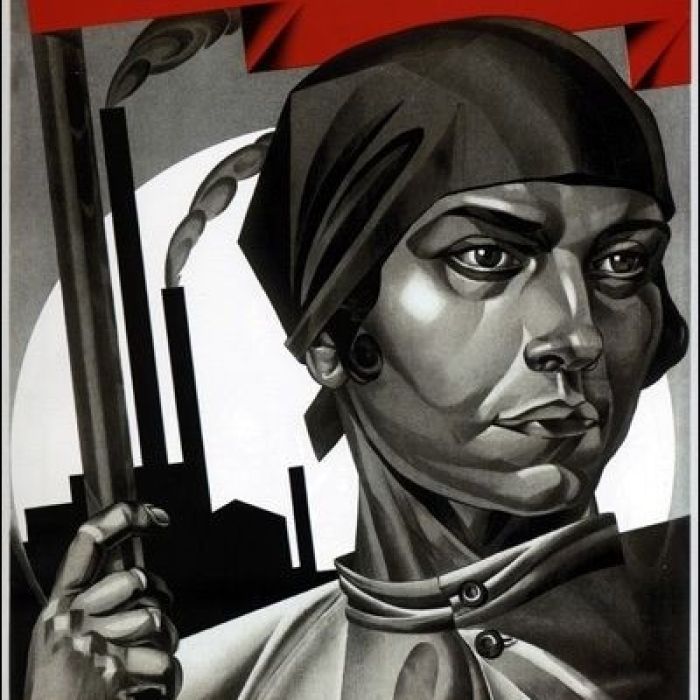The metaphors of war have been in abundance since the onset of COVID-19. In Britain, the Queen, in a speech, evoked the WW2 song, “We’ll Meet Again.” The Italian Prime Minister, Giuseppe Conte, also invoked WW2 when he used Winston Churchill’s words to talk about Italy’s “darkest hour.” Donald Trump has described himself as a “war-time president, fighting against an invisible enemy.” The UN Secretary General stated that “We are at war with a virus – and not winning it. This war needs a war-time plan to fight it.” A headline in The Globe and Mail read: “We are at war with COVID-19. We need to fight it like a war.”
While we recognize the hyperbole of these references, it’s interesting to see how, from an economic/production perspective, things worked out in a “real war”– could free market capitalism get the job done or would some socialist type tweaking be required?
Canadian economy in WW2
Military production for the war effort was the priority. The Canadian aircraft industry grew to employ nearly 116,000 workers, 30,000 of whom were women. It delivered 16,418 aircraft to fill Allied orders, chiefly to Britain and the United States. Before the war, there had been only eight small plants in the entire country, making about forty airplanes annually.
It was state capitalism, not socialism. Profits still rolled in. That’s not surprising given that the Ministry of Munitions and Supply that created many Crown Corporations and directed private corporations was under the control of C. D. Howe – the same individual that gave his name to Canada’s leading right-wing economic think-tank.
US economy in WW2
One of the features of WW2, in the Allied countries, was the dramatic intervention of the state in the area of requisitioning, production and distribution of goods. But it wasn’t straightforward. For many in government it was an eye opener to discover that businesses were less than patriotic, were more interested in profits and not so convinced that “they were all in it together.” According to economics professor Alexander Field, the (US) government “nearly fumbled the ball at first, trying to lure the private sector into building a war machine using financial tools such as tax incentives and accelerated write-offs of capital investments … It was not ‘snap our fingers, we are going to build 100,000 aircraft.’… Many manufacturers did not want to use their own funds to build specialized facilities and acquire special-purpose machine tools to manufacture goods that they knew would have a limited shelf life. We bumbled a lot in World War II, and with a really determined effort we could have screwed it up and lost the war.”
So, what did they do? “From the beginning of preparedness in 1939 through the peak of war production in 1944, American leaders recognized that the stakes were too high to permit the war economy to grow in an unfettered, laissez-faire manner. American manufacturers, for instance, could not be trusted to stop producing consumer goods and to start producing material for the war effort. To organize the growing economy and to ensure that it produced the goods needed for war, the government spawned an array of mobilization agencies, which not only often purchased goods, but which in practice closely directed those goods’ manufacture and heavily influenced the operation of private companies and whole industries.”[1]
Aircraft companies went from building a handful of planes at a time to building them by the thousands on assembly lines. Aircraft manufacturing went from a distant 41st place among American industries to first place in less than five years. In 1939, total aircraft production for the US military was less than 3,000 planes. By the end of the war, America produced 300,000 planes.
WW2 and COVID-19 – similarities and differences
Of course, it would be false to rely too much on the comparison of WW2 and COVID-19. Today we need supplies such as PPE, ventilators, test kits and cleaning agents. And even if the production is vast, it would probably amount to a fraction of the $3 trillion or more in today’s dollars spent during World War 2 by industry and government on manufacturing and equipment. In WW2, the issue, in terms of pursuing the war effort, was how to produce large quantities of planes, jeeps, ships, etc. in a compressed time frame. It came down to whether businesses could be persuaded to convert their factories to war production or whether there had to be an element of compulsion. In WW2, the Canadian government was overseeing an economy that, compared to the “dirty thirties” that preceded it, was steaming ahead with full employment. With COVID, on the other hand, the economy has been going in the opposite direction. It lost almost two million jobs in April, a record high.
The total value of Canadian WW2 war production was almost $10 billion – approximately $100 billion in today’s dollars while today Federal projected spending on direct supports (CEBA and more) due to COVID-19 hit $145 billion as of April 24.
However, there are important lessons to be drawn. If systems and priorities need to be turned on a dime whether it’s to produce fighter bombers or ventilators, what’s the most efficient way to do it? The traditional response of the right would be to say, “leave it to market forces,” let the invisible hand work its magic. Even if they conceded a role for government, it would only be to requisition goods, paying the going price on the open market.
The Defence Production Act
It should come as no surprise, given Donald Trump’s general response to the crisis, that his reaction to the shortage of essential supplies (PPE, ventilators etc.) at the onset of the outbreak was not one of urgency. Trump had in his arsenal, if he chose to use it, the Korean War-era law, the Defence Production Act (DPA) to order companies to ramp up production of critical supplies. The government doesn’t have the authority to take ownership of a company under the act, but it can direct operations. It has been used extensively in the past by both Republicans and Democrats, mainly employing its powers to make a company prioritize the Government’s order for supplies over all others. For a full week before the decision to implement the DPA, the administration had been dithering about invoking it to press industry into action, saying the country was not in such dire straits. There was plenty of volunteer cooperation, they said, and there was always the implicit threat of ordering mandatory measures if they did not. Trump, no surprise, suggested an ideological concern as well. “We’re a country not based on nationalizing our business,” he said. In a tweet of March 18, he wrote, “I only signed the Defence Production Act to combat the Chinese Virus should we need to invoke it in a worse case scenario in the future. Hopefully, there will be no need, but we are all in this TOGETHER!”
Push back from business
Of course, there was push back from business. The New York Times reported that “the Chamber of Commerce and the heads of major corporations lobbied the administration against using the act. They said the move could prove counterproductive, imposing red tape on companies precisely when they need flexibility to deal with closed borders and shuttered factories.” Despite this business opposition and his own misgivings, Trump gave instructions for General Motors to “accept, perform, and prioritize Federal contracts for ventilators,” contending that “GM was wasting time” and the action would save lives. None of this invalidated what a former CEO of General Motors said, “For years I thought that what was good for America was good for General Motors, and vice versa.”
Relying on the forces of the market to solve the problems was shown in all its chaos as the coronavirus crisis continued to spread. Health workers, local governments and hospitals were complaining of shortages of equipment. On March 22, The New York Times reported that “Governor Andrew Cuomo of New York made a public appeal for the federal government to take over the distribution of critical goods, arguing that Mr. Trump’s insistence last week that states should find the medical equipment for themselves was turning into a senseless free-for-all. ‘Don’t get into this mad bidding war,’ Mr. Cuomo said, noting that the federal reticence was resulting in huge price surges, hoarding and shortages in some of the hardest-hit locales, including New York City. Only the federal government can require private firms to shift their production, Mr. Cuomo said. ‘If I had the power, I would do it in New York,’ he said.”
More of the government in action (inaction?) was revealed when an experienced emergency manager with the government was unable to say how many face masks had been shipped from national stockpiles, or how many had been ordered. “I can’t give you a rough number; I can tell you it is happening every day,” he said.
Oshawa, General Motors and Green Jobs Oshawa
An illustration of the community spirit of a major Canadian capitalist institution, is shown with the recent history of General Motors. Taxpayer support for GM Canada goes back a long way – in fact, it helped bring the company into existence. Back in 1899, a devastating fire ruined the McLaughlins’ carriage plant in Oshawa, Ontario. The City of Oshawa came forward with a generous rescue proposal: an interest-free, $50,000 loan, which could be paid back over the next 20 years. McLaughlins later started making cars and was bought out by Detroit-based General Motors in 1920. Just for the period 1982 to 2005, GM received $1.1billion in grants and interest free loans (some of which were non-repayable) from the Federal and Ontario governments. Then in 2009 came the big one: the two governments provided $10.5 billion to bail out GM amid the economic downturn and essentially saved the company. While some loan portions of the bailout were repaid, it was estimated that Ontario and federal taxpayers took a $2.8 billion loss on GM’s portion of the bailout. So how did GM repay this largesse? In November 2018, GM’s US headquarters announced the closure of the Oshawa plant, with the loss of 2,600 jobs, along with three other US-based plants. Just a normal day under capitalism. According to GM’s boss, the company was reacting to slow sales of sedans and rising costs from Trump’s steel and aluminum tariffs.
But it didn’t completely shut down. A year later they had changed their minds. Instead of shutting the entire facility down, they would invest $170 million to convert part of it into a facility for stamping, sub-assembly, and autonomous vehicle testing. The conversion would save 300 jobs. However, that would still leave 2,300 employees out of work. Green Jobs Oshawa, a group of GM workers, community activists, environmentalists, labour and social justice advocates set itself up 6 months ago. Given that 90 percent of the complex was to be idled, removed, or bulldozed, they argued for the conversion of the Oshawa facility into a centre for the production of fleets of electric vehicles. Unsurprisingly, GM management turned a deaf ear.
COVID and GM and the race to supply N95 masks
Which brings us to the COVID-19 connection. On April 24,GM Canada announced that it was preparing portions of the Oshawa plant to produce face masks based on the GM production model already working in Michigan. The plan is to manufacture approximately one million masks per month at cost for the Canadian government with an estimate of 50 employees supporting two shifts of production. At first look, this may seem an impressive response. Yet bear in mind that GM, on May 9, ignored the request to start up production of N95 masks. According to the Canadian government there is a shortage of over 150 million N95 masks. Across Ontario, seven health-care workers have died from COVID-19 and more than 3,200 are sick. Those sobering statistics pushed the Ontario Council of Hospital Unions (OCHU) to lobby for one piece of equipment, N95 masks, that may help those on the front lines. “We’ve been calling on the government to use its emergency powers to order industry to produce the N95 mask and it was disappointing to learn General Motors in Oshawa will be making masks but not the N95 masks,” said Michael Hurley, president of the OCHU.
A Toronto Star story of May 23 had the headline, “High hopes for Canadian companies in race to supply N95 masks.” It described the “race” between a Québec company and one from BC to get their manufacturing systems up and ready to produce N95s. Like the race to find a vaccine, it begs the question of why there is a race in the first place. Why not have cooperation and pooling of resources instead of competition? It is clear that even with a more interventionist state in times of a pandemic, the basic system of capitalism still rules. Green Jobs Oshawa put forward their demands:
- “Manufacture N95 masks in Oshawa
- Establish permanent manufacturing of essential products
- Make it a crown corporation
The shortage of necessary medical equipment and PPE, especially N95 masks, is endangering patients and front-line medical, nursing and retail workers.
- The Canadian government reports a shortage of over 150 million N95 masks
- Health care workers do not have the PPE they need
- PPE manufacturing at the GM Oshawa plant will only involve 50 workers, and won’t start for 3 to 4 weeks
THIS IS NOT GOOD ENOUGH!”
Socialist Alternative Canada also demands that this become a permanent operation. This will not be the last crisis we face. We need the manufacturing capacity in Canada for a secure supply of strategically important medical equipment and PPE, and other socially beneficial products.
Back to capitalism as usual?
Everyone seems to accept that there’s no going back, that we have to become reconciled to “the new normal.” Undoubtedly, capitalism has suffered a severe setback both materially and to its image. Neoliberals are becoming a disappearing breed. The voices calling for trickledown economics, austerity, privatization, and tax cuts for big business will still be there but they will be muted in comparison to those calling for greater public investment in health care, education, and housing and supporting wealth taxes. Indications of this come from a survey this month of 1,800 Canadians, finding that 60 percent said they “strongly” support bringing long-term homes under the Canada Health Act (i.e., nationalizing them) while 26 percent “moderately” support this. And this was before the report from the Canadian military on the scandalous state of care in these homes. Another poll this month showed that over two-thirds of Canadians supported a wealth tax.
Part of the new normal will be an acceptance from broad layers of the population that there’s an increased role for state intervention ranging from creating more bike lanes to greater regulation/oversight of services to outright nationalization of businesses. Socialist Alternative will support these demands but we will also argue that state intervention shouldn’t be just reserved for wars, pandemics and their after effects. Capitalism was already in crisis before the coronavirus come along to wreak its havoc. Before we had the war on coronavirus, there was the war on drugs, and the war on crime. How is it we could never have a war on poverty, on homelessness, on racism, on climate change? The COVID-19 crisis has shown that governments can dig deep when their system is threatened. Let’s build a movement that can use resources rationally and that can put capitalism out of its misery. And let that movement be a genuine democratic movement. A strong interventionist state is only one part of the equation, the other is to have real, democratic checks and controls over that state. The experience of China and coronavirus demonstrates this when, in the initial outbreak in Wuhan province, Beijing attempted to hide and distort key scientific data on the pandemic and it cracked down on whistleblowers and journalists questioning the government’s response to the outbreak.
Bail Out Workers, Not Corporations
- Take into public ownership GM, requisitioning the production of N95 masks.
- Take into public ownership and management the long-term care facilities in Canada, with unionized full-time workers.
- Introduce price controls and all necessary actions to prohibit profiteering from the crisis.
- Refuse corporate bailouts, instead bring corporations asking for bailouts into public ownership.
- Implement democratic involvement of workers and communities in decisions.
- Make banks and corporations, not workers, pay the cost of this crisis. Outlaw tax havens and repatriate funds. Nationalize the banks.
- Introduce a millionaires’ wealth tax to raise the billions needed.
[1] https://eh.net/encyclopedia/the-american-economy-during-world-war-ii/




